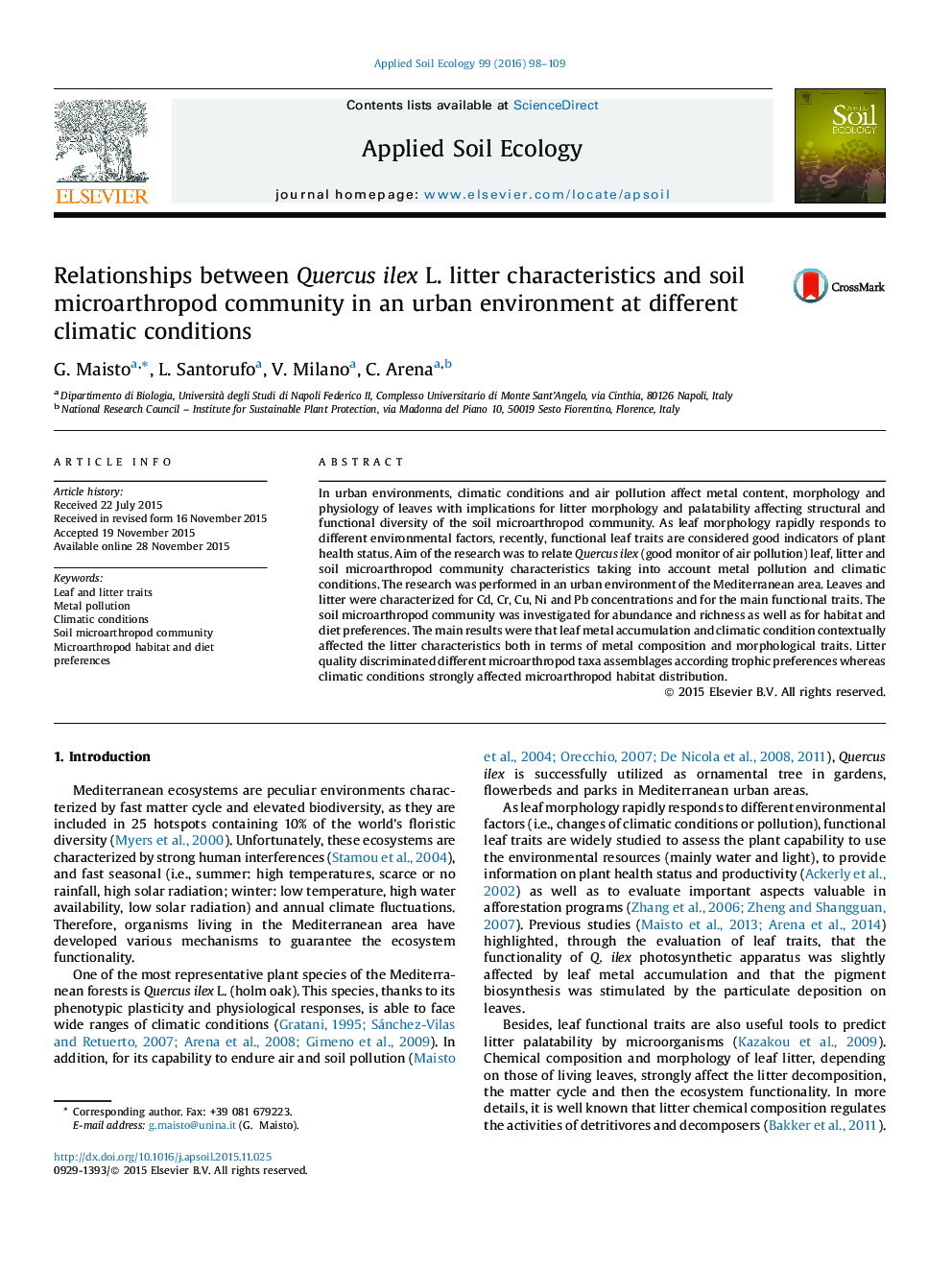| Article ID | Journal | Published Year | Pages | File Type |
|---|---|---|---|---|
| 4381843 | Applied Soil Ecology | 2016 | 12 Pages |
•Metal composition and traits of Q. ilex litter were affected by those in the leaves.•Litter quality appeared a selective force for the microarthropod taxa assemblages.•The relative abundance of microarthropods of different diet depended on litter traits.•Microarthropod habitat preferences depended on climatic conditions and metal content.
In urban environments, climatic conditions and air pollution affect metal content, morphology and physiology of leaves with implications for litter morphology and palatability affecting structural and functional diversity of the soil microarthropod community. As leaf morphology rapidly responds to different environmental factors, recently, functional leaf traits are considered good indicators of plant health status. Aim of the research was to relate Quercus ilex (good monitor of air pollution) leaf, litter and soil microarthropod community characteristics taking into account metal pollution and climatic conditions. The research was performed in an urban environment of the Mediterranean area. Leaves and litter were characterized for Cd, Cr, Cu, Ni and Pb concentrations and for the main functional traits. The soil microarthropod community was investigated for abundance and richness as well as for habitat and diet preferences. The main results were that leaf metal accumulation and climatic condition contextually affected the litter characteristics both in terms of metal composition and morphological traits. Litter quality discriminated different microarthropod taxa assemblages according trophic preferences whereas climatic conditions strongly affected microarthropod habitat distribution.
